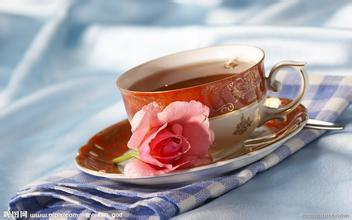Introduction to the flavor and taste characteristics of Hawaiian Kona coffee boutique coffee beans
Major industries in the state of Hawaii include tourism, defense industry and agriculture. Pearl Harbor on the south bank of Oahu Island is the largest American military port in the Pacific Ocean; Honolulu, the state capital, is the industrial and commercial center of Xiazhou. [1]
Agriculture is the pillar of the local economy, producing sugar cane, pineapple, coffee, bananas and so on, of which pineapple production ranks first in the world. [1] Hawaii is suitable for the growth of sugar cane. Two-thirds of the land in the archipelago grows sugarcane, producing about 1 million tons of crude sugar each year. It is equivalent to 10% of the total sugar consumption in the United States each year, so it is called the sugar island of the United States. [4] Food processing is the main industry, with a few oil refining, chemical industry, cement and so on. Food and major industrial products are dependent on imports. Due to the pleasant climate and beautiful scenery, the tourism industry is well developed, with an average annual tourist volume of more than 7 million. Oahu is an area with a concentrated tourism industry. [1]
According to the Bank of Hawaii, the ripple effect of tourists' spending in Hawaii is 2, that is, for every $1 spent by tourists, it will increase the local total output value by $2. Tourism income accounts for 60% of the local gross domestic product, so that Hawaii's economic growth rate is always higher than the average economic growth level of the United States. [1]
As tourism plays an important role in Hawaii's economy, the Hawaiian state government attaches great importance to protecting the environment, protecting tourism resources, and paying attention to the development of "clean" industries. such as marine science, aquaculture, tropical agriculture, financial services, commercial centers, etc., in order to promote the development of tourism and promote economic development. [1]
Social editor
Population
In 2000, the resident population of the state of Hawaii was 1.212 million and the floating population was 1.334 million (including tourists). Japanese are the largest Asian people in Hawaii, followed by Filipinos, Aborigines, Chinese, Koreans, Vietnamese, Laotians and Thais. The urban population accounts for 86.5%. About 80% of the state's population is concentrated on Oahu. [1]
Education
Hawaii State University
Hawaii State University
The most famous university in Hawaii is the Hawaiian State University (University of Hawaii). Its main school districts are: Hilo, Manao and West Oahu. In addition, famous private universities in Hawaii include Brigham Young University in Hawaii (Brigham Young University-Hawaii Campus), Chamanard University (Chaminade University) and Hawaii Pacific University (Hawaii Pacific University) in Honolulu, and Loa College in Hawaii (Hawaii Loa College) in Oahu.
Kona coffee is grown on the slopes of Mauna Roa volcano on the southwest coast of Hawaii. In terms of flavor, Kona beans are closer to Central American coffee than Indonesian coffee. Its average quality is very high, carefully handled, medium texture, good sour taste, very rich flavor, and fresh Kona coffee is extremely fragrant. If you think your coffee is too thick, African coffee is too sour, Central and South American coffee is too rough, then "Kona" may be suitable for you. Kona is like a girl in the Hawaiian sunshine breeze, fresh and natural.
Kona coffee beans are average and neat in shape, with strong sour and sweet taste, moist and smooth taste. Because they grow on volcanoes and have high-density artificial farming, each bean can be said to be a spoiled "lady" with beautiful, plump and baby-like skin.
Although Hawaii is often affected by tornadoes, the climatic conditions are very suitable for the coffee industry. There is plenty of rain and sunshine, and there is no worry of frost. In addition, there is a strange natural phenomenon called "free shade". On most days, around 2 o'clock in the afternoon, white clouds appear in the sky, providing the necessary shade for the coffee trees. In fact, it is such superior natural conditions that make Arabica coffee in the Kona region produce more coffee than any other plantation in the world, and always maintain high quality, unique growth and climate environment to create a stronger coffee flavor.
But to the regret of coffee fans, only about 1400 hectares of coffee is produced. And because of Hawaii's high income and a large number of tourists, Kona coffee is so expensive that it is even sold as "kona blend" (no more than 5 per cent of Kona beans). Neighboring islands such as maui, kauai and molokai have also begun to grow coffee commercially.
Taste editor
Kona coffee is indeed a treasure in the world and is not easy to find. The real Hawaiian Kona coffee has the sweetness of caramel, which makes people enjoy the unique pleasure and leads you slowly into the detached state of tasting coffee.
Of all the coffee producers, Hawaii has the most stringent management of the coffee industry, the highest labor costs and the best level of investment.
Hawaii's coffee industry has to compete with the expanding tourism industry. Most coffee is grown on the slopes of MaunaLoa. Mauna Loa was originally a volcano located in the western part of the Kona region on the island of Hawaii. The coffee producing area is about 30 kilometers long and its growing areas are mainly concentrated in the north and south of the area. Coffee trees are planted in relatively desolate areas, but their soil is fertile and contains volcanic ash. Although it takes a lot of physical labor to start planting and it is difficult to manage, it is comforting that Kona's coffee trees (at least those growing above 90 meters above sea level) do not seem to be affected by any diseases and insect pests

Important Notice :
前街咖啡 FrontStreet Coffee has moved to new addredd:
FrontStreet Coffee Address: 315,Donghua East Road,GuangZhou
Tel:020 38364473
- Prev

Aromatic, full-bodied Rwandan coffee flavor Taste Manor characteristics Fine coffee Introduction
Clans began to coalesce into kingdoms in the 15th century, and by 1700 there were eight kingdoms in Rwanda. The Kingdom of Rwanda, ruled by the Tutsi Nyiginya clan, grew from the mid-18th century until it reached its peak in the 19th century under King Kigali IV. Between 700 BC and 1500 AD, some Bantu groups migrated to Rwanda, clearing forests for seed production
- Next

Introduction to fine coffee with mild acidity and taste of Costa Rican coffee
According to statistics from the Costa Rican Project Development Agency (Cinde), exports of business services in Costa Rica accounted for 6 per cent of GDP in 2012, surpassing traditional industries such as agriculture and tourism for the first time (5.6 per cent and 5.4 per cent respectively). Of the US $2.265 billion of foreign investment attracted by Costa Rica, business services accounted for US $910 million, accounting for 40 per cent of total foreign investment. Enterprise service
Related
- Detailed explanation of Jadeite planting Land in Panamanian Jadeite Manor introduction to the grading system of Jadeite competitive bidding, Red bid, Green bid and Rose Summer
- Story of Coffee planting in Brenka region of Costa Rica Stonehenge Manor anaerobic heavy honey treatment of flavor mouth
- What's on the barrel of Blue Mountain Coffee beans?
- Can American coffee also pull flowers? How to use hot American style to pull out a good-looking pattern?
- Can you make a cold extract with coffee beans? What is the right proportion for cold-extracted coffee formula?
- Indonesian PWN Gold Mandrine Coffee Origin Features Flavor How to Chong? Mandolin coffee is American.
- A brief introduction to the flavor characteristics of Brazilian yellow bourbon coffee beans
- What is the effect of different water quality on the flavor of cold-extracted coffee? What kind of water is best for brewing coffee?
- Why do you think of Rose Summer whenever you mention Panamanian coffee?
- Introduction to the characteristics of authentic blue mountain coffee bean producing areas? What is the CIB Coffee Authority in Jamaica?

